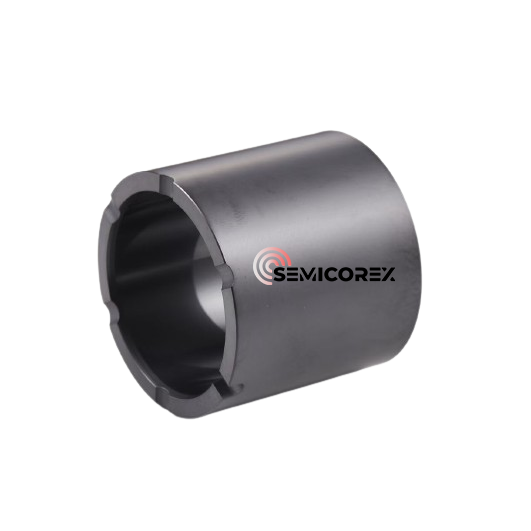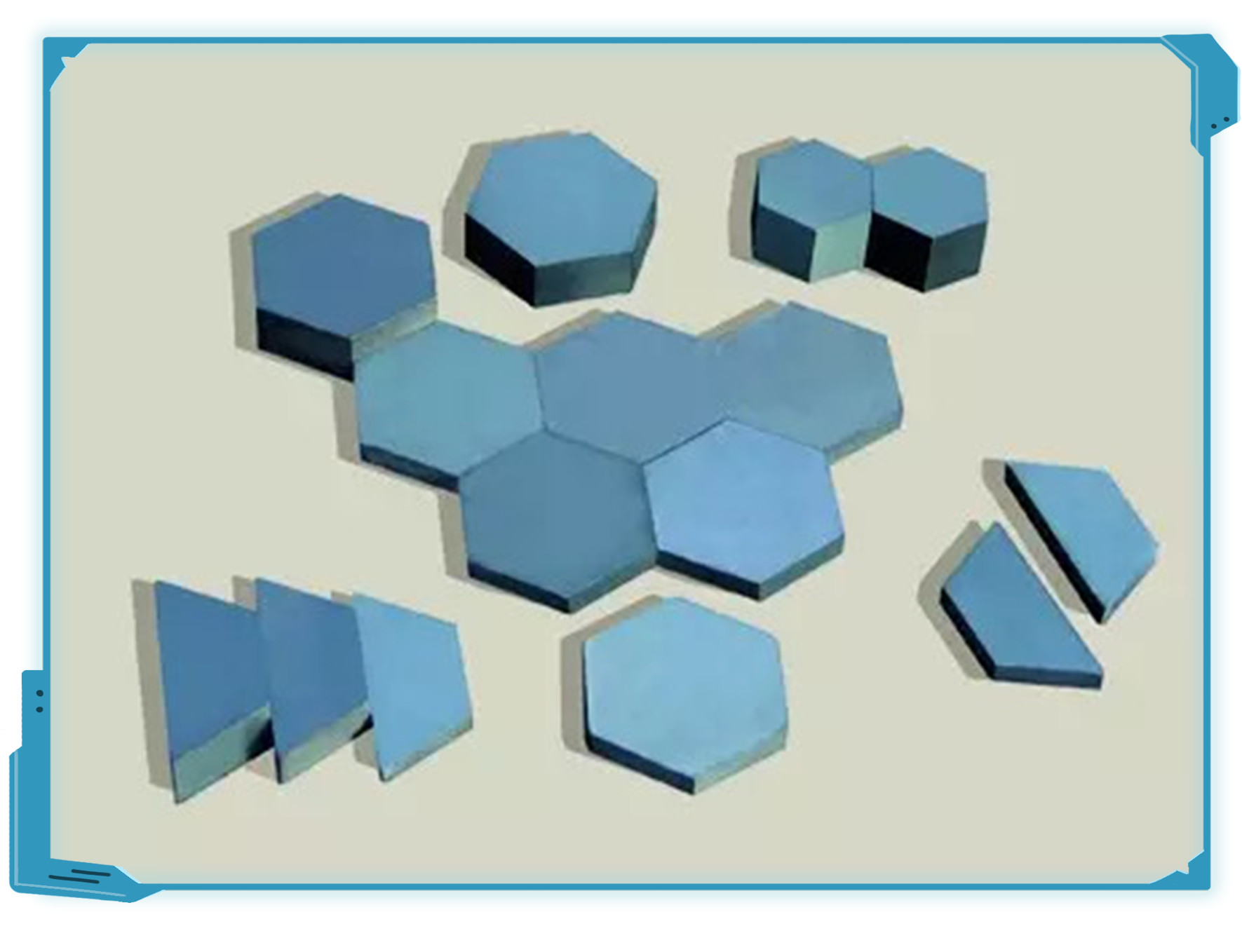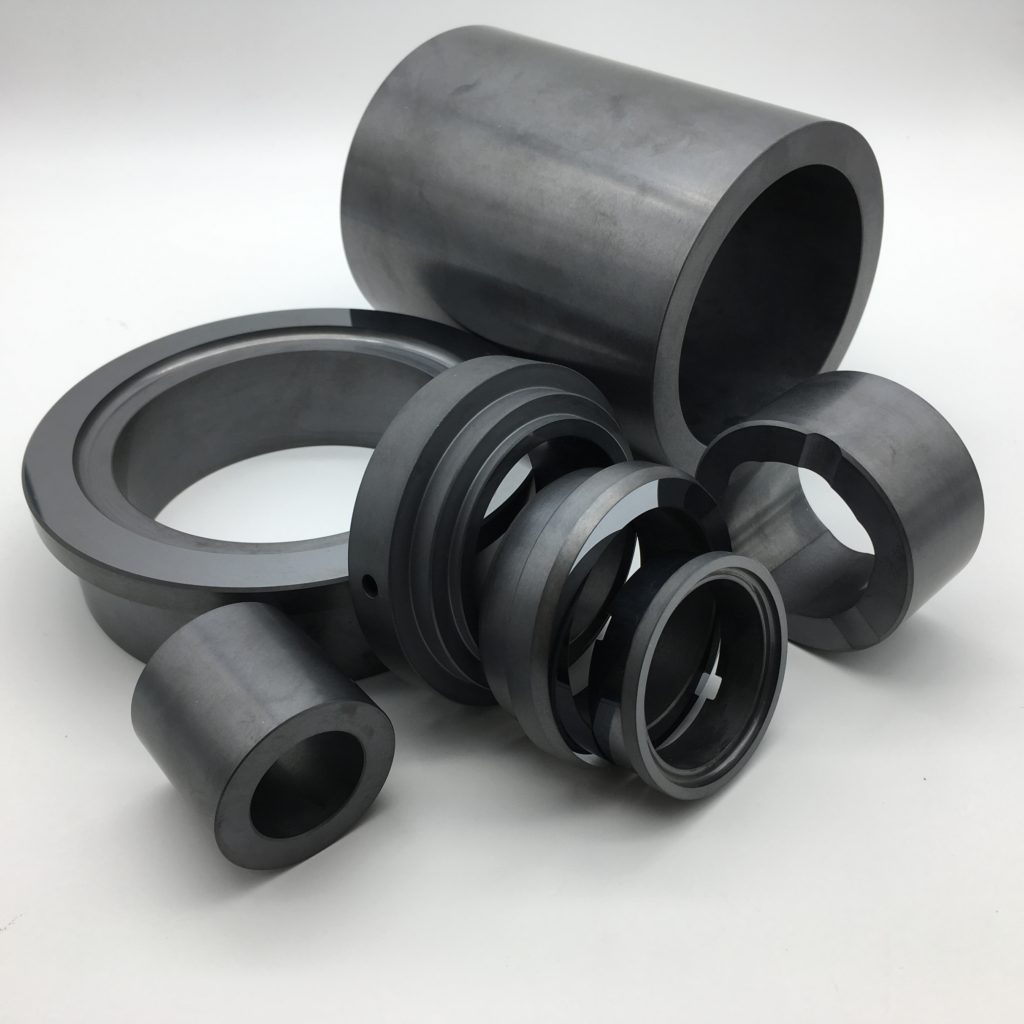
- English
- Español
- Português
- русский
- Français
- 日本語
- Deutsch
- tiếng Việt
- Italiano
- Nederlands
- ภาษาไทย
- Polski
- 한국어
- Svenska
- magyar
- Malay
- বাংলা ভাষার
- Dansk
- Suomi
- हिन्दी
- Pilipino
- Türkçe
- Gaeilge
- العربية
- Indonesia
- Norsk
- تمل
- český
- ελληνικά
- український
- Javanese
- فارسی
- தமிழ்
- తెలుగు
- नेपाली
- Burmese
- български
- ລາວ
- Latine
- Қазақша
- Euskal
- Azərbaycan
- Slovenský jazyk
- Македонски
- Lietuvos
- Eesti Keel
- Română
- Slovenski
- मराठी
- Srpski језик
Specialized Preparation Techniques for Silicon Carbide Ceramics
2024-09-02
Silicon carbide (SiC) ceramic materials possess a range of excellent properties, including high-temperature strength, strong oxidation resistance, superior wear resistance, thermal stability, low thermal expansion coefficient, high thermal conductivity, high hardness, thermal shock resistance, and chemical corrosion resistance. These characteristics make SiC ceramics increasingly applicable in various fields such as automotive, mechanical and chemical industries, environmental protection, space technology, information electronics, and energy. SiC ceramics have become an irreplaceable structural ceramic material in many industrial sectors due to their outstanding performance.

What Are the Structural Characteristics That Enhance SiC Ceramics?
The superior properties of SiC ceramics are closely related to their unique structure. SiC is a compound with very strong covalent bonds, where the ionic character of the Si-C bond is only about 12%. This results in high strength and a large elastic modulus, providing excellent wear resistance. Pure SiC is not corroded by acid solutions like HCl, HNO3, H2SO4, or HF, nor by alkaline solutions such as NaOH. While it tends to oxidize when heated in air, the formation of a SiO2 layer on the surface inhibits further oxygen diffusion, thus keeping the oxidation rate low. Additionally, SiC exhibits semiconductor properties, with good electrical conductivity when small amounts of impurities are introduced, and excellent thermal conductivity.

How Do Different Crystal Forms of SiC Affect Its Properties?
SiC exists in two main crystal forms: α and β. β-SiC has a cubic crystal structure, with Si and C forming face-centered cubic lattices. α-SiC exists in over 100 polytypes, including 4H, 15R, and 6H, with 6H being the most commonly used in industrial applications. The stability of these polytypes varies with temperature. Below 1600°C, SiC exists in the β form, while above 1600°C, β-SiC gradually transforms into various α-SiC polytypes. For instance, 4H-SiC forms around 2000°C, while 15R and 6H polytypes require temperatures above 2100°C to form easily. The 6H polytype remains stable even above 2200°C. The small difference in free energy between these polytypes means that even minor impurities can alter their thermal stability relationships.
What Are the Techniques for Producing SiC Powders?
The preparation of SiC powders can be categorized into solid-phase synthesis and liquid-phase synthesis based on the initial state of the raw materials.

What Are the Methods Involved in Solid-Phase Synthesis?
Solid-phase synthesis primarily includes carbothermal reduction and direct silicon-carbon reactions. The carbothermal reduction method encompasses the Acheson process, vertical furnace method, and high-temperature rotary furnace method. The Acheson process, invented by Acheson, involves the reduction of silica in quartz sand by carbon in an Acheson electric furnace, driven by an electrochemical reaction under high temperature and strong electric fields. This method, with a history of industrial production spanning over a century, yields relatively coarse SiC particles and has a high power consumption, much of which is lost as heat.
In the 1970s, improvements to the Acheson process led to developments in the 1980s, such as vertical furnaces and high-temperature rotary furnaces for synthesizing β-SiC powder, with further advancements in the 1990s. Ohsaki et al. found that the SiO gas released from heating a mixture of SiO2 and Si powder reacts with activated carbon, with increased temperature and extended holding time reducing the specific surface area of the powder as more SiO gas is released. The direct silicon-carbon reaction method, an application of self-propagating high-temperature synthesis, involves igniting the reactant body with an external heat source and using the chemical reaction heat released during synthesis to sustain the process. This method has low energy consumption, simple equipment and processes, and high productivity, though it is difficult to control the reaction. The weak exothermic reaction between silicon and carbon makes it challenging to ignite and sustain at room temperature, necessitating additional energy sources such as chemical furnaces, direct current, preheating, or auxiliary electric fields.
How Is SiC Powder Synthesized Using Liquid-Phase Methods?
Liquid-phase synthesis methods include sol-gel and polymer decomposition techniques. Ewell et al. first proposed the sol-gel method, which was later applied to ceramics preparation around 1952. This method uses liquid chemical reagents to prepare alkoxide precursors, which are dissolved at low temperatures to form a homogeneous solution. By adding appropriate gelling agents, the alkoxide undergoes hydrolysis and polymerization to form a stable sol system. After prolonged standing or drying, Si and C are uniformly mixed at the molecular level. Heating this mixture to 1460-1600°C induces a carbothermal reduction reaction to produce fine SiC powder. Key parameters to control during sol-gel processing include solution pH, concentration, reaction temperature, and time. This method facilitates the homogeneous addition of various trace components but has drawbacks such as residual hydroxyl and organic solvents harmful to health, high raw material costs, and significant shrinkage during processing.
High-temperature decomposition of organic polymers is another effective method for producing SiC:
Heating gel polysiloxanes to decompose them into small monomers, ultimately forming SiO2 and C, which then undergo carbothermal reduction to produce SiC powder.
Heating polycarbosilanes to decompose them into small monomers, forming a framework that ultimately results in SiC powder. Recent sol-gel techniques have enabled the production of SiO2-based sol/gel materials, ensuring homogeneous distribution of sintering and toughening additives within the gel, which facilitates the formation of high-performance SiC ceramic powders.
Why Is Pressureless Sintering Considered a Promising Technique for SiC Ceramics?
Pressureless sintering is regarded as a highly promising method for sintering SiC. Depending on the sintering mechanism, it can be divided into solid-phase sintering and liquid-phase sintering. S. Proehazka achieved a relative density above 98% for SiC sintered bodies by adding appropriate amounts of B and C to ultra-fine β-SiC powder (with oxygen content below 2%) and sintering at 2020°C under normal pressure. A. Mulla et al. used Al2O3 and Y2O3 as additives to sinter 0.5μm β-SiC (with a small amount of SiO2 on the particle surface) at 1850-1950°C, achieving a relative density greater than 95% of the theoretical density and fine grains with an average size of 1.5μm.
How Does Hot Press Sintering Enhance SiC Ceramics?
Nadeau pointed out that pure SiC can only be densely sintered at extremely high temperatures without any sintering aids, prompting many to explore hot press sintering. Numerous studies have examined the effects of adding B, Al, Ni, Fe, Cr, and other metals on the densification of SiC, with Al and Fe found to be the most effective for promoting hot press sintering. F.F. Lange investigated the performance of hot press-sintered SiC with varying amounts of Al2O3, attributing densification to a dissolution-reprecipitation mechanism. However, hot press sintering can only produce simple-shaped SiC components, and the product quantity in a single sintering process is limited, making it less suitable for industrial production.
What Are the Benefits and Limitations of Reaction Sintering for SiC?
Reaction-sintered SiC, also known as self-bonded SiC, involves reacting a porous green body with either gaseous or liquid phases to increase mass, reduce porosity, and sinter it into a strong, dimensionally accurate product. The process involves mixing α-SiC powder and graphite in a certain ratio, heating to around 1650°C, and infiltrating the green body with molten Si or gaseous Si, which reacts with graphite to form β-SiC, binding the existing α-SiC particles. Complete Si infiltration results in a fully dense, dimensionally stable reaction-sintered body. Compared to other sintering methods, reaction sintering involves minimal dimensional changes during densification, allowing for the manufacture of precise components. However, the presence of a considerable amount of SiC in the sintered body leads to poorer high-temperature performance.

In summary, SiC ceramics produced by pressureless sintering, hot press sintering, hot isostatic pressing, and reaction sintering exhibit varying performance characteristics. SiC ceramics from hot press and hot isostatic pressing generally have higher sintered densities and flexural strengths, while reaction-sintered SiC has relatively lower values. The mechanical properties of SiC ceramics also vary with different sintering additives. Pressureless, hot press, and reaction-sintered SiC ceramics exhibit good resistance to strong acids and bases, but reaction-sintered SiC has poorer corrosion resistance to strong acids like HF. In terms of high-temperature performance, almost all SiC ceramics show strength improvement below 900°C, while reaction-sintered SiC’s flexural strength sharply decreases above 1400°C due to the presence of free Si. The high-temperature performance of pressureless and hot isostatic pressed SiC ceramics primarily depends on the type of additives used.
While each sintering method for SiC ceramics has its merits, the rapid advancement of technology necessitates ongoing improvements in SiC ceramic performance, manufacturing techniques, and cost reduction. Achieving low-temperature sintering of SiC ceramics is crucial to lowering energy consumption and production costs, thereby promoting the industrialization of SiC ceramic products.**
We at Semicorex specialize in SiC Ceramics and other Ceramic Materials applied in semiconductor manufacturing, if you have any inquiries or need additional details, please don't hesitate to get in touch with us.
Contact phone: +86-13567891907
Email: sales@semicorex.com




